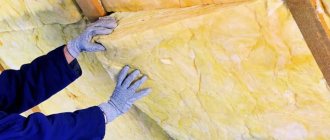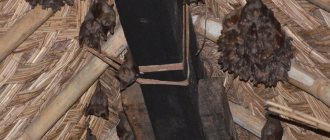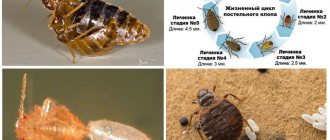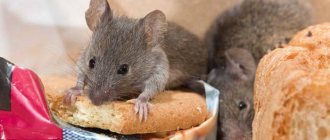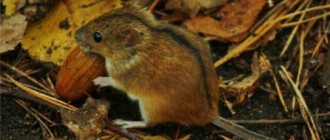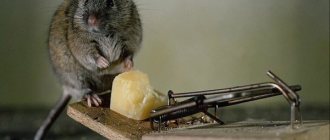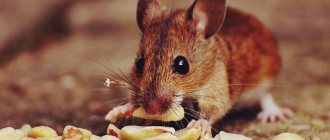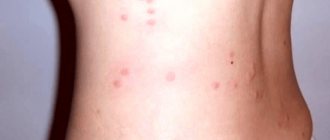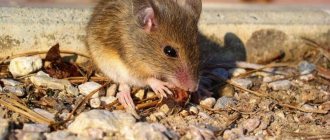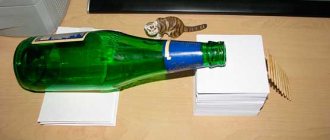Thanks to their design and technical features, houses made of insulated panels are very popular today. The high demand for this material raises a question among future owners: sip panels for construction and mice - is it true or a myth?
Construction is based on the frame-panel principle, which has the following characteristics:
- high strength;
- fast pace of construction;
- simple house kits;
- cost reduction;
- resistance to any climatic conditions.
Mice and vulture panels are an eternal dilemma
Reliability indicators
The main task of insulation is to preserve heat at the facility and protect building elements from external factors - precipitation and temperature fluctuations.
Therefore, low thermal conductivity comes first. This parameter determines the amount of heat that escapes outside. It should be as low as possible. Two more important parameters are vapor permeability and hygroscopicity. They are responsible for the moisture permeability of the insulation. If the insulator absorbs too much moisture, it will quickly lose its properties. Mineral and stone wool slabs suffer from increased sensitivity to this parameter.
Preservation of the original dimensions, fire and environmental safety are also important. The combination of all these qualities will maintain a comfortable microclimate for people for a long time.
As a rule, when installing insulation, a small air gap is created. It helps remove condensation and shift the dew point into the space between the house element and the insulating layer. Mice and other rodents strive to occupy this warm place - they eat the insulator and live in it. As a result, the parameters deteriorate.
Rodents tear insulating material to pieces. However, gradually the through holes begin to let in cold, moisture and comfort disappears. The mice leave to look for another place, and gradual destruction awaits the home, especially if the owners do not know about the damaged insulation.
Is OSB board harmful?
In the manufacture of OSB boards, glue based on formaldehyde resins is used. It binds wood chips together. Formaldehyde is a toxic substance. The more molecules of formaldehyde there are in the air, the more dangerous it is to be in the room. The degree of toxicity of OSB boards is determined by the maximum permissible concentration (MAC) of a harmful substance in milligrams per 1 cubic meter of air. This parameter is indicated in the hygiene certificate for the product. The maximum permissible concentration of formaldehyde should not exceed 0.003 mg/m³.
Advice: when purchasing SIP panels, ask the manufacturer for a sanitary certificate for OSB boards. Look at the certificate for the toxicity index of the OSB board. If the numbers are from 70 to 120%, then, according to the sanitary classification, this means that the material is non-toxic.
Mice and rats in SIP houses
Throughout human history, rodents have been direct competitors of humans in the struggle for food resources, and with the advent of primitive gathering and food storage, mice and rats became his enemies. A modern city dweller treats them as funny animals, but in a traditional village no one would think of keeping a mouse in the house.
In a country individual house, it is not so difficult to fight rodents, but you should take care of this in advance. If mice or rats have made their way into the food room, it will not be so easy to drive them out.
Under certain conditions, mice can gnaw through many materials: if you need to expand the opening of a hole, wood, drywall, and foam are not a problem for them. There are cases when rodents even gnawed at bricks. Only metal, hard stone, good concrete and glass resist their sharp teeth.
A house made of SIP panels is protected from mice
It would seem that SIP houses are perfectly adapted for the life of mice. In fact, on the contrary, they lack two important elements: closed passages and small holes from which you can gnaw a hole. Even if the mouse gets inside the SIP panel, it will not be able to move freely in it and will not find a hole with a protruding piece of wood, starting from which it can gnaw out a passage.
Among my old clients there was not a single one who complained about rodents in SIP houses. This does not mean that mice or rats cannot live there. Poorly designed heating, water supply inlets, sewerage, ventilation ducts - all this can become a mouse kingdom, and then additional costs will be required. If you encounter rodents in a SIP house, please write to me.
Communication inputs and outputs
Traditionally, rodents live in the ground. It is from there that they enter the house.
Fortunately, overcoming the SIP ceiling is an impossible mission for them... unless the owner himself or illiterate workers have made poorly insulated holes for them, through which it is easy to pave the way to food. If such a hole also ends in a closed plumbing box, this is no longer a road, but a fortified bridgehead.
Drywall on frame
All instructions for finishing SIP houses say that gypsum boards are sewn without a frame directly onto flat walls made of SIP panels. There are many reasons for this.
However, every second foreman-finisher “recommends” the owner to make drywall on the frame: “the walls will be smoother, and the wiring will be easier.”
In fact, the “worker” is driven by illiteracy and the desire to earn more money.
Among all the disadvantages of frame cladding, there is one more: the appearance of uncontrolled space for rodents to move around. If your walls have already been sheathed on a frame, remove it as soon as possible!
Holes in walls and boxes
All openings in ceilings and between rooms must be foamed and treated with sealant.
You need to be careful about all the boxes, have access to them and make jumpers in advance that do not allow any living creatures to move in them.
Metal mesh with small mesh helps keep rodents out (in the foundation vents and at the bottom of the basement), and plastic mesh should be used on windows and the roof to keep insects out.
Additional funds
If mice and rats have already chosen your area, for example, in a barn or a warm basement, the following means are usually used:
- Mousetraps (they help if you know that the way for rodents to enter the house has already been cut off).
- Poison pills (cruel but effective method - if there are no children or pets in the house).
- Crushed glass - when mice persistently make a hole in the same place.
- Ultrasonic repellers (as people write - not all of them help).
- Cat (not every cat catches mice).
If you are planning to build a house from SIP, you should not be afraid of mice - this problem is rather far-fetched. But you can’t completely relax, especially when wiring communications. Remember that these small animals are the sworn enemies of humans in nature.
Additional Precautions
If there is a risk of an animal getting into the house or in a room where there is a lot of food that is attractive to mice, then you should think about precautions.
On a note!
Builders claim that mice do not live in vulture panels; reviews from residents of such houses confirm the words of professionals. But rodents can still get into human homes.
The following remedies will help eliminate stray pests:
- place mouse traps-cages and glue-based traps for mice;
- spread out mouse poison or poisonous tablets;
- get a rat-catcher cat;
- turn on the ultrasonic repeller.
If there are small children or pets in the house, then it is better not to use chemicals. Mousetraps and glue traps should be hidden so that you do not get caught in them. The sticky substance does not dry for a long time and is difficult to remove from skin and clothing, and the trap can cause injury.
The answer to the question of whether mice eat vulture panels can only be negative. But a house built from these materials cannot protect one hundred percent from rodents. Therefore, it is worth taking additional protective measures.
Rating( 2 ratings, average 5 out of 5 )
What not to choose
Thus, natural insulation and polystyrene provide the greatest pleasure to rodents. Insulation based on mineral and basalt wool will not stop them either. All these insulation materials are soft, so they are quite easy to “deal with.” Given the significant sound insulation, it will be difficult to immediately hear the presence of mice.
The only way to protect the space between the wall and the insulation is to use solid insulation. However, aerated concrete and the company have one significant drawback - they can only be used at the construction stage of a building. And on top of that, they conduct heat well, so they are rarely used.
Another solution to the problem is inflatable insulators led by penoizol. Mice don't eat them at all. However, due to the insignificant amount of work, the cost of insulation can increase several times compared to alternatives. But its advantage is that it can be insulated both during construction and during the operation stage of the building.
If you can't afford solid insulation, take steps to rodent-proof your insulation. When insulating with materials made from natural raw materials, give preference to balls, which are immediately concreted. Concrete will protect the foam or straw from mice's teeth.
Give preference to a strip foundation - it will be difficult for rodents to overcome. And under the floor of the first floor, place any loose insulation and broken glass
It is important to adhere to the technology of laying the heat insulator. Gross violations of work stages will lead to the appearance of gaps, which mice will certainly take advantage of
If problems arise during operation, additional measures will have to be taken. There are several main ways to control rodents:
- laying ecowool in the floors - it consists of 80% wood cellulose and 20% borax, becoming an antiseptic, mice do not eat it;
- spray the blocks with a solution of lime and borax;
- adding slag, tobacco dust, ash, mint, wormwood and pine branches to the insulation;
- the use of metal mesh in places where rodents can enter, for example, in the floor;
- using a monolithic reinforced concrete slab as a foundation.
When planning construction, it is worth wrapping the building with a metal grid (cells 5 by 5 mm). But sometimes rodents chew through a mesh with a wire thickness of 1.5 mm.
When the mice are already infested
When the mice have already started, you can do the following. The first method is to use an “expanded clay” castle by firing low-melting clay. A 30 cm layer of expanded clay is laid on the ground, which is covered on top with plastic film and two layers of OSB-3. Laminate is laid on top of these layers. This method is very effective. Also, a 10 cm layer of expanded clay is placed between the main and subfloor.
Acoustic devices will also be effective, especially those imitating the sounds of animals and birds of prey that feed on mice. And if none of the above helps, get a cat and mouse trap.
Now you know which insulator mice cannot chew on - penoizol. All other materials have protective measures.
Most Frequently Asked Questions
What types of foundations can be used for such houses?
Is it possible to use a ready-made foundation? Is there seasonality in the construction of such houses or can they be built all year round? p>No matter how strong a brick house is, it is fragile to deflection, no matter how you look at it. If one corner shrinks, the crack will run along the entire wall all the way to the roof. But houses made from SIP panels have a fibrous wooden structure in their nature. And lateral displacements may not affect the house at all. Strength against a direct impact on a wall...
One wood screw screwed into 12 mm thick OSB (the inner lining of our sip panels) can withstand 120 kg perpendicular to the applied load. Based on this, the kitchen set will hang even with cast iron cookware.
The technology for placing heavy objects on SIP walls is as follows:….
SIP panel 1250x3000x124 mm can withstand 200 kg of load per 1 sq.m. surfaces with a deflection of no more than 12 mm. SIP panel 1250x3000x224 mm can withstand 375 kg of load per 1 sq.m. surfaces with a deflection of no more than 5 mm.
In houses made of SIP panels, due to their low weight, there is no shrinkage of the house. Houses made from SIP panels are not deformed. Over time, the walls remain the same perfectly smooth and even.
Compared to houses built from timber, brick, gas silicate, cinder blocks, which require annual shrinkage before finishing work begins, additional leveling of walls and additional insulation.
This means that you can move into our house immediately after construction is completed.
Also, the house can be built on any soil, as it has a relatively low weight compared to brick and concrete houses. SIP panel housing construction is the main type of low-rise construction in Scandinavia, Germany, Canada and the USA.
This type of technology is suitable for a wide range of climatic zones and geological conditions (-40 + 40 C). Such buildings can be installed in permafrost zones and seismically hazardous areas.
Properties
You will not find a single mention on the Internet that mice have ruined a house made of SIP panels. Although in the West this technology has been used for more than half a century. Yes, mice can really chew foam. Therefore, when using it in an ordinary frame house, where it is the only thermal insulation layer, there really are such risks.
In the SIP panel it is separated from the mouse by a 12 mm OSB layer. To get into it, the mouse needs to chew through this OSB. But it turns out that when an OSB board breaks down, hard and sharp slivers are formed, which mice do not like at all.
If we imagine, at least hypothetically, that a mouse managed to gnaw through the OSB, then it turns out that there is nothing for the mouse to breathe in the foam - it is sealed hermetically and air can only enter through the hole that it gnawed.
Finishing and design
The technology of a house made of SIP panels makes it possible, without significant financial investments, to give the cottage the outside and inside any (even the most sophisticated) architectural form, to realize the most daring ideas of an architect and designer. The cladding of a house can be done in such a way that it will not differ in appearance from the finishing of a building built of brick or concrete.
Almost any material can be used as exterior finishing: facing brick, finishing stone, plaster, wooden lining, siding, etc. You can combine finishing materials. For example: brick and block house, plaster and stone panels, etc.
The same is true with interior finishing: there are no restrictions on the use of interior finishing materials in a house made from SIP panels.
Reasons for the appearance of mice in a private home
There are many reasons why rodents appear in the house. Unlike urban housing, where the spread of rodents occurs only through ventilation shafts and can be eliminated quickly, mice can enter the house through any crack from the street.
Mice - voles, which have chosen a place to live, can sneak into a house or cottage in the fall and winter in search of warmth and food. Rodent control needs to be comprehensive both in the house and in the garden.
Common house mice can:
- move away from neighbors when the population in the neighboring area is very large;
- can be brought with the harvest in a bag;
- entire colonies of mice are capable of moving from a garbage dump to the basement of a country house or to the attic and settling there for a long time.
To prevent the appearance of rodents in a private home, you must follow the recommendations:
- regularly wash floors using aromatic oils or herbal infusions (mint, chamomile, wormwood);
- take out the trash every evening and rinse the bucket with vinegar;
- do not store waste on the site;
- mow the grass regularly;
- put all supplies in glass or metal jars;
- in closets where things are stored, place containers with dried wormwood;
- get a cat.
Fighting mice is not an easy task; rodents can appear again at any time. If you use prevention methods and start fighting uninvited “guests” right away, you can prevent the colony from growing and effectively remove rodents for a long time.
How to deal with pests in a country house, private house or utility room? For prevention you should:
- eliminate all cracks and cracks on the floor and walls, cover the ventilation with special grilles;
- install screens on windows;
- reliably protect food products in sealed containers made of plastic, glass or metal;
- Maintain cleanliness in all areas.
When performing all this work, you should be very careful, since even a small gap in the wall, on the floor or at the junction of the screens and windows is enough for the animals to get inside your home. An important point is maintaining cleanliness in the premises. These animals have an excellent sense of smell, so if there is edible food in accessible places, it will be immediately destroyed by representatives of the mouse family.
In order to quickly eliminate rodents from your home, you can use mint. They cannot stand the aroma of this plant, so all places that smell of mint are unsuitable for them to live. You can use not only the leaves, but also peppermint oil. At the same time, you need to change the grass quite often.
How to get rid of mice in the house if it was not possible to prevent their appearance? There are several effective options:
- Mousetraps.
- Pets.
- Poisons.
- Ultrasonic devices.
If you want to understand how to get rid of rodents in the house for good and select the most effective trap, you should know that adhesive structures are often criticized for the fact that they do not kill the animal instantly, but only immobilize it, which often condemns the vole to slow and hungry death.
Representatives of the mouse family easily adapt to any living conditions, so they can eat almost all foods. Therefore, as bait you can use:
- cheese;
- peanut butter;
- bread;
- other aromatic products.
Prevention of occurrence
When there are first attacks on vegetables, the presence of tunnels and nests for mice, urgent measures must be taken to get rid of them. The sooner you start, the easier it will be to get rid of them. But you can also be prudent about the possible appearance of rodents and take preventive measures. They need to be carried out until mid-autumn, before the cellar is filled with vegetables and preparations. They will prevent rodents from appearing in the basement.
In this video we will look at how to rid a cellar of mice:
This is useful: .
Preventive methods of dealing with future rodents:
- Equip the door with a metal covering. A thin sheet is enough.
- Cover all ventilation openings with fine metal mesh. Don't forget that a small mouse can fit through a hole the diameter of a felt-tip pen.
- Pack all products in airtight containers. Cover them tightly with the lid.
The effectiveness of these methods depends on the quality of the load-bearing walls in the room. If they are brick or concrete, everything will work fine.
What kind of insulation is not chewed by mice?
Using high-quality insulation materials for your home allows you to create a cozy atmosphere for a long time. This process often takes a lot of time and resources. However, over time, destruction of the protective layer may occur, the culprit of which will not be natural or physical factors, but banal rodents.
In this regard, you need to know which insulation is not chewed by mice or other small pests. By choosing the best option, it will be possible to avoid irreversible damage to the integrity of the structure. In the resulting cavities, small animals hide from the cold, at the same time they make a lot of moves, as a rule, turning everything into dust.
Design features of SIP panels
Due to the active development of frame construction, a new method of housing construction has appeared on the North American and European markets. This method was sip technology. It is based on the frame-panel principle of house construction, which has proven itself worthily in all respects:
- high strength;
- speed of construction;
- reduction in construction costs up to 30%;
- endurance in any climatic zones;
- service life up to 100 years and many other qualities.
The structural insulated panel (or sandwich panel), which has become the core element of the technique, is constructed of three layers. The two side ones consist of fiberboard or OSB, and the middle one consists of insulation.
The boards are made from flat wood chips. These chips are laid transversely, impregnated with synthetic resin and placed under high temperature pressure. The internal insulation is made of polystyrene foam or polyurethane foam.
Is it possible to prevent the appearance of tailed residents in the house?
If there are small pests in the house, it is impossible to get rid of them forever. Is it possible to prevent their occurrence? Tailed animals do not like the smell of mint and bay leaves. If there is a threat of pests, you can place them near places where they can enter the house. You can drop a few drops of peppermint essential oil into water and use a spray bottle to treat the interior and area around the building. The presence of a cat can also force animals to avoid the house.
To prevent the appearance of tailed “tenants”, it is necessary to regularly do wet cleaning and vacuum the carpets. If something spills or falls apart, you should clean it up immediately. It is necessary to free the house from trash - old newspapers, boxes, clothes, furniture and other items in which pests can build nests. Garbage must be thrown away on time. It is better if the trash can is equipped with a lid. Food should be stored in airtight containers - an open box of cereal or bread left in a bag can attract the animal.
What danger do rodents pose to humans?
When settling in houses and apartments, small pests damage furniture, shoes, clothes, and household utensils. The animals destroy food supplies located in easily accessible places. One individual eats up to 30% of its weight per day, about 2 kg per year. If there are a lot of mice in the house, the damage will be significant. The products and water they have tasted become unfit for consumption. In rooms where mice have infested, an unpleasant odor appears that is difficult to get rid of. Rodents damage finishing (they especially like to chew on insulation) and electrical wiring, causing short circuits that lead to fires.
The animals are carriers of dangerous diseases - salmonellosis, leptospirosis, tularemia, hemorrhagic fever, bartonellosis, toxoplasmosis, yersinosis. In addition, rodents are parasitized by fleas and ticks, which can also become a source of infection. The carrier of the disease can be a cat that has eaten a mouse.
Pathogens can be transmitted to humans by:
- direct contact with a living or dead mouse;
- inhalation of particles of dried excrement and wool;
- consumption of foods eaten by rodents;
- contact of animal biological fluids with damaged human skin;
- bite.
So does extruded polystyrene foam burn or not? How fireproof is it?
The Fire Defense Research Institute knows how polystyrene foam burns. Natalya Konstantinova heads the building materials sector and burns dozens of samples every day. Expanded polystyrene belongs to the group of flammable and highly toxic materials. The material burns and melts easily, falling drops continue to burn. When burned, it emits black smoke and soot, making it almost impossible to breathe in the laboratory despite the powerful exhaust hood. Only 2 grams of this material were burned. Extinguishing is practically useless, because the water only cools the outer skin, i.e. the panels themselves are driven between polystyrene foam. What are we seeing in this video?
On the academician’s desk is an Eco Pan sandwich panel. They also called it “Eco”, do they give such names on purpose? to distract us from the essence and distort the reality of things. Entire cottage communities are now being built from such panels. To see samples we went to the exhibition at VDNKh. Luxurious cottages attract with their beauty and affordability; a square meter of housing costs only about 8,000-9,000 rubles. And this is 3 sometimes 4 times cheaper than stone construction. It is clear that many people dream of living in their own home, and when such an opportunity arises, we do not try to obtain reliable information, but take the word of the manufacturer. But we looked at these houses with horror, as Academician Maltsev said: “These houses are a real gas chamber.” Although the main manager of the exhibition, Gennady Alferov, assures that this material has more advantages than disadvantages, and also that it is an absolutely harmless material. All building materials in our country must have 3 certificates: hygienic, fire and construction. As a rule, all products made of polystyrene foam, and these are hundreds of items, have all the necessary certificates. Which causes wild surprise and misunderstanding.
Do you want to learn about insulation materials and construction technologies that should be used when building a private house? Then hurry up and subscribe to new articles on my blog.
Ways to control rodents on the ceiling
How to get rid of mice under a suspended ceiling in order to get by with minimal losses, and most importantly, not to spoil the ceiling covering.
You can use mouse poison, which is available in every hardware store. Next, dismantle the lamps on the ceiling and scatter the contents. Just scatter, you cannot use gels, adhesives, etc. compositions, because this will spoil the tension material and visible stains may appear. The problem is that the mouse will not die near the hole; it will take some time before it dies, which means it will die in any area. If the ceiling area is small, then you can use some tricks to get a dead rodent. Well, if the canvas is large, then it will be difficult to remove the body, but it is impossible to leave it. Therefore, before deciding to use poison, it is necessary to consider the consequences of the possibility of disposing of the rodent.
Ultrasonic repellers
Modern technologies make it possible to use ultrasonic repellers to combat rodents. It is worth installing them in problem areas, turning them on for a certain time, and the mice will escape through the holes that came. This will not solve the problem completely, because sooner or later the rodents may return. Work can be carried out on wooden floors after eliminating mice using ultrasound. To do this, above the floors, be it the second floor or the attic, you need to calculate all the holes and seal them.
Traditional methods of controlling rodents in the ceiling
If you don’t want to risk using poison, but there is no ultrasound, then you can use traditional methods of fighting rodents in the ceiling. One of these is installing a mousetrap in the hole under the lamp.
Care must be taken to ensure that the blade is not damaged when installing and closing the mechanism. The second method is a constructed slide from a hole with bait
A rodent, going down to food, will roll down, where it will be much easier to catch it. You can attach a mousetrap below, then the mouse will not have time to run around in search of salvation.
Services of specialized teams
To protect yourself from inventing ways to kill mice on the ceiling, you can get the services of specialized teams who will professionally approach the solution to the problem. In addition, the risk of damage to the canvas will be minimized, because independently removing rodents can expose you to making mistakes. As you know, the material that makes up a suspended ceiling is very sensitive to tension. If you unsuccessfully catch the edge in the area where the lamps are attached, the ceiling surface will instantly split along its entire length.
Preventing mice from appearing on the ceiling
Preventing the appearance of mice on the ceiling remains important.
She needs to pay special attention. It is necessary to prevent as much as possible the risk of rodents entering the ceiling space
It should be remembered that after removing animals from the ceiling, the possibility of them appearing again is one hundred percent, so work must be carried out to seal all possible entry points. The methods depend on the possibility of access to the disturbed areas. In a private house, especially if the floors are wooden, it is easier to eliminate problem areas. In multi-apartment brick or panel buildings, preventing the accessibility of rodents can be carried out by dismantling the tension material, and then installing it again. Although in modern apartment buildings the number of rodents is small, you can do without removing the canvas, because the risk of the animals reappearing is minimal.
Methods of disposal
Elimination measures depend on the ways mice penetrate inside the walls. Follow the following tips.
All discovered holes and burrows must be carefully filled with a mixture of concrete and glass - this composition will be too tough for mice. First, poison, blackroot grass, tansy (or other poisonous plants that rodents are afraid of) or rags soaked in a solution of ammonia, vinegar, mothballs, and peppermint extract are placed in the hole.
Particular attention is paid to utility lines, through which mice can also easily get inside the wall. All ventilation ducts are covered with a fine-grained metal mesh, the outlets of sewer and water pipes are sealed and sealed so that no hole can squeeze through the existing gap.
True, the methods described above, although effective, have their own side effect: the walled up animals will sooner or later die of hunger, and their corpses will begin to emit a rather specific aroma.
Therefore, you should choose a poison with a mummifying effect (for example, mortorate, “rat death, etc.), in this case the flesh does not decompose, but dries out. But before repair work, it is better to lure the mice out of the nest and destroy them using any available method, or even better, in several ways at once.
Various tricks are used for these purposes:
- mechanical traps with bait;
- sticky backings, again with an attractive treat in the center;
- ultrasonic repellers;
- unpleasant odors for rodents;
- anti-mouse herbs (black root, tansy, wild rosemary);
- rat poison;
- They don’t forget about cats, mice don’t like being around them;
- electronic live traps.
It is clear that it is necessary to lay out and install “enticement boxes” not throughout the house, but where the animal gang most often appears: near burrows, next to food supplies. When working, do not forget about their own safety and the safety of their household, especially protect pets and children from traps and poisonous baits, so as not to cause trouble in the form of poisoning or serious injuries.
Study
The answer to the question about thermal insulators that repel rodents is impossible without market research. In total, it contains two types of heat insulators - organic and artificial.
Organic insulators are made from recycled or natural materials. They contain a minimum of chemical additives - only substances that resist fire. The main examples are ecowool, reed, straw, etc.
There are many more inorganic or artificial heat insulators. And if natural ones are produced, as a rule, in bulk or in slabs, then this category has more formats: slab mineral or basalt wool and loose perlite. You can opt for solid aerated concrete. Next we will talk about reliability indicators in relation to rodents.
Where do mice come from?
These uninvited guests can appear in apartment buildings from the basements, from the side of the garbage chute or trash bin located not far from the building itself. Old ventilation ducts or elevator shafts also facilitate the movement of these animals. If there are cracks in the houses or the building consists of load-bearing walls, ceilings and partitions with hollow internal spaces, then these are the places where such “residents” can still appear in the apartments.
Dampness and warmth are also favorite conditions for such small mammals. That is why these pests so often show their presence in a private home or in heated warehouses closer to winter. In the fall, it is better to check your house or corners in your apartment for holes, cracks or gaps through which animals can easily enter people's homes. Everything should be sealed, plastered with durable plaster and treated with repellent chemicals. In general, they will always look for where it is warmer and where there is food for them.
How to fill the voids between walls and drywall instead of insulation
Therefore, before proceeding with the installation of drywall, it is advisable to take care of what material to choose to eliminate the void between its sheets and the load-bearing base. How important is it to fill the free space with one or another finishing element? A serious discussion may flare up on this issue between competent specialists, but there is simply no consensus on this matter. If a void forms between the drywall and the wall, it is important to fill it with some suitable material. And here you can freely show your imagination aimed at creating a suitable interdimensional layer
Thanks to it, all this hollowness is eliminated and the strength of the finish itself is significantly increased. Therefore, these positive factors cannot be ignored, because they can be decisive for creating a positive internal microclimate inside the home! You can also think about equipping the entire wall base with plywood, and then attaching plasterboard sheets to it. The advantage of this method is the technical simplicity of installation, which is done using traditional dowels and nails.
But it is extremely important to hammer them in at even intervals around the entire perimeter. Of course, the most classic option is polystyrene foam, which is the most common insulation material.
But in practice, it is quite possible to do without it, the main thing in this case is to show your ingenuity!
The owner of a private house may encounter such a problem when mice run under the suspended ceiling, hide in the cavity between the walls and there is no way to get them out of there. Reason: the basement of the house (not finished); mice penetrated under the skin of the house and got inside through the outdoor unit of the air conditioner of the installed split system
Are mice afraid of cats and will a pet help exterminate pests?
Representatives of the cat family have hunted rodents for a long time. Will a pet help exterminate pests? Hunting instincts have been preserved in modern cats, and many of them continue to successfully fight rodents. However, often the pet turns out to be incapable of catching small animals and is even afraid of them. This is not surprising, because today's cats rarely see mice, and besides, domestic animals are usually well-fed, and therefore do not consider it necessary to hunt.
If you decide to get a cat for pest control, you need to take a responsible approach to choosing an animal. Cats living outside are constantly training their hunting skills, so you can adopt one straight from there.
There is no desire to have a pet - you can feed a street one, but the amount of food should be small - a well-fed animal will not engage in fishing. If you want to combine business with pleasure and buy a purebred kitten that would catch mice, you should take a closer look at breeds such as Bobtail, Maine Coon, Burmese, Siberian, Russian Blue or Siamese.
Modern remedies for mice and rats
Ultrasonic rat and mouse repellent
Ultrasound devices are often advertised on TV. They claim that this device is absolutely harmless to people and pets. Its effect is that the device makes a sound that is unpleasant to mice and they voluntarily leave the home.
Chemicals for mice and rats
"Bactorodendicide."
This medicine contains cereals contaminated with bacteria. When mice eat the poison, they get typhus and die. The drug is believed to be harmless to humans. But there is a possibility that pets will decide to taste the “product”
Should be used with caution
"Rat Death"
This is also poison. The bait is placed at a distance of 2 - 15 meters in places where there are usually mice. You need to be as careful as possible with this drug: the sachets should not be opened or touched with your hands without protection. When the mice disappear, collect the bait and burn it.
Buy the drug "Rat Death"
Professionals treat premises with pesticides. I must say, this is a dangerous way to get rid of rodents. It is possible to get poisoned if you violate the rules of staying indoors.
Is polystyrene foam hazardous to health?
EPS - expanded polystyrene - polymer material. During polymerization, styrene molecules (monomer) are cross-linked into polymer chains. According to GOST 10003-90, according to the degree of impact on the human body, styrene belongs to the third hazard class - moderately hazardous substances. According to sanitary standards of the Russian Federation, polystyrene foam can be used as an insulating building material, because its toxic effect manifests itself only when the MPC is significantly exceeded.
In SIP panels, polystyrene foam is covered on both sides with OSB boards - vapor barriers. They prevent styrene from penetrating into the room. High-quality SIP panels have a sanitary certificate, which confirms the safety of the product.
